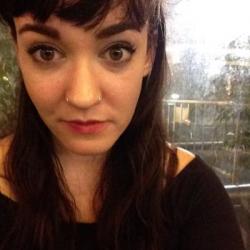Just over 370 kilometres from Reykjavik, in the far southeast corner of the country, you’ll find the Jökulsárlón glacier lagoon. This particular lake—Iceland’s deepest, in fact, at a depth of around 250 metres—is considered to be amongst one of the crown jewels of Icelandic nature. It’s easy to see why; calm and dreamy, the lagoon has the backdrop of jutting, angular Vatnajökull glaciers, and is liberally decorated by shining blue and white icebergs, all reaching upwards against the serene, mountainous surroundings.
Jökulsárlón also sits next to the so-called ‘diamond beach’: a majestic, Tim Burton-esque black sand shoreline, which owes the basalt-rich ground for its unusual colouring, and the glittering chunks of ice studding its length for its moniker. Once upon a time, the sea spilled into a river, travelling along for around 1.5 kilometres before opening up into the lagoon. But as the glaciers melted, Jökulsárlón grew, and now the beach and the lake sit right next to each other in one surreal, Swarovski-bedazzled landmark.

Change of scenery
The journey from Reykjavík to Jökulsárlón is a long trip to make in a day, clocking in at around five hours each way. We set off for the south at the end of November when the days are short, with the sun rising around ten in the morning and setting around four. To make it to Jökulsárlón during the few hours of daylight, our guide warns us that we’ll be racing against the clock. So we set off from the BSÍ bus terminal in the pitch black early morning, sleepy and bleary-eyed.

After two hours the sun finally begins to peek over the horizon, adding a cool glow to the frosty November landscapes. The last time I travelled these roads it was in the summertime, and the different season has given the scenery a brand new look. Lush green fields have been transformed into shining white stretches, and the omnipresent moss covering the lava fields now boasts a glittering blanket of snow. Where delicate waterfalls once cascaded down grass-topped cliffs, frosty stalagmites have formed, stuck fast against the rock faces. These frozen waterfalls, with their sharply pointed fingers of ice, provide a stark—but equally beautiful—contrast to the flowing energy of the summer.

Winter wonderland
On the way we make a quick stop at Skógafoss, one of the country’s largest waterfalls, with its expansive 15 metre width and 60 metre drop. It’s bitterly cold as we approach the mammoth column of water that thunders down amidst the ice-encased cliffs casting plumes of misty spray up against the wintry walls.
I peer at the crystallised precipices, noting the different patterns that emerge; the frozen spray hitting the cliff has created a swirling pattern, and the liquid dripping downwards forms hundreds of spindly, entwined icicles. As I consider going up the steps to see the view from the top, our guide calls us back to the bus to continue our race against the sun.

The glacier lagoon
Finally, after four more hours of driving, we peel off Route One to Jökulsárlón and pick our way carefully across to the edge of the lagoon. As with anything created naturally, you never really know what you’ll find, and the scattered icebergs make the lake look very different from day to day, and even from moment to moment. This time, we’re greeted by a vast array of huge, hulking, jagged chunks, sharply shaped and coloured a pure, translucent blue, as if made of stained glass.
A smattering of smaller ice fragments orbit outwards, some dusted with a film of smoky grey ash, their images mirrored on the lake beneath. There must be over one hundred icebergs in total, stretching all the way back to the serene, snowy mountains. The water is perfectly still, and as the sun begins to set, the waning light bounces from the white peaks, adding a touch of warmth to an otherwise cool and wintry colour palette.

Natural treasures
We cross the road to the beach and crunch over the black sand, admiring the strange, glassy blobs of ice marooned on the shore. Unlike the icebergs bobbing on the lagoon, the incoming tides on the beach have left these stranded chunks polished, shiny and crystal clear—the “diamond beach” moniker is well earned.
By now, the sun is dipping lower in the burnt pink and orange sky. Despite the earlier worries about missing the narrow window of daylight, the dusk light pouring over the monochrome black beach and its icy treasures turns out to be perfectly beautiful after all.
We linger for a while, watching the tide ebb and flow over the icy diamonds, washing them clean of gritty dark sand. But it’s so cold that my hands are almost completely numb, even in my thick Icelandic wool gloves. We managed to beat the early sunset, but now the darkness is encroaching, and it’s time to turn our backs on this strange vista and head back home.


Buy subscriptions, t-shirts and more from our shop right here!

